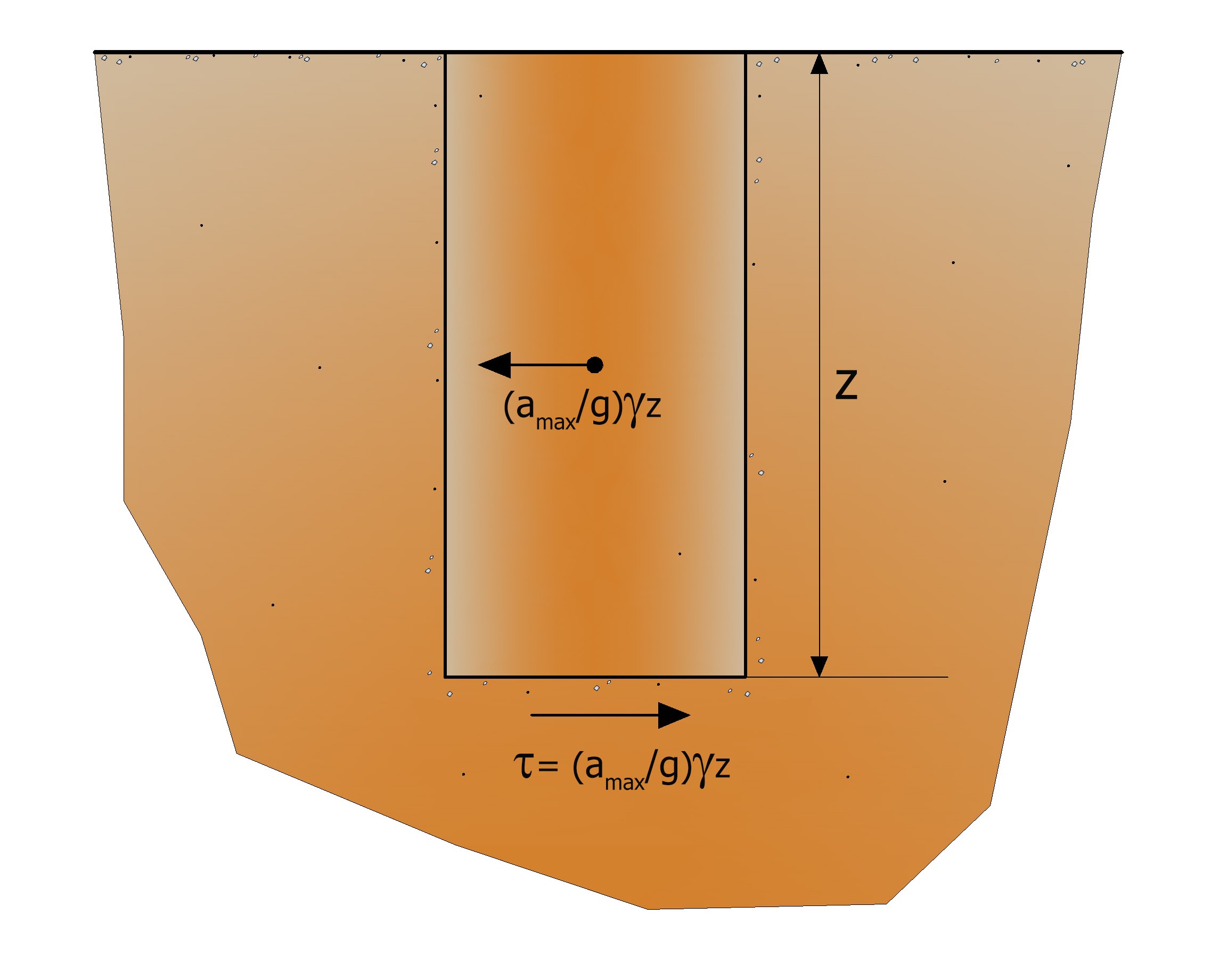The simplified methods are based on the relationship between the shear stresses which produce liquefaction and those induced by the earthquake; therefore they need to evaluate the parameters for both seismic event and deposit. The resistance to liquefaction of the deposit is then calculated in terms of liquefaction resistance factor.
![]()
where CRR (Cyclic Resistance Ratio) indicates the resistance of the soil to cyclic shear stresses and CSR (Cyclic Stress Ratio) the maximum shear stress induced by the earthquake.
The proposed simplified methods are different especially as it concerns the calculation of CRR, the liquefaction resistance. The most used parameter is the blow count from the SPT even if nowadays is preferred the computation of the liquefaction potential from CPT test or measurements of the shear waves velocities Vs. These methods are generally used for the design of structures with average importance.
Seed and Idriss (1971-1982), propose a simple procedure based on the assumption of homogeneous soil. Assuming the vertical propagation of seismic share waves, a soil column of height z (Figure 1) moves rigidly in the horizontal direction and therefore the maximum shear stress at the depth z is given by:
![]()
where amax is the maximum acceleration at the surface, g the acceleration of gravity and γ is the dry unit weight of soil.
Since in reality the soil is deformable, the shear stress is less than that in the case of a rigid body, so we have to introduce a reduction factor rd. Normalizing with the vertical effective pressure and referring to an average value τav rather than to a maximum value τmax we obtain:

The value rd is the stress reduction coefficient and is determined as follows (Liao e Whitman,1986):

Where z is depth below ground surface in meters.

Figure 1 – Shear stress induced by the earthquake to depth "z"
© Geostru